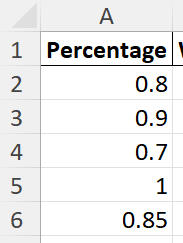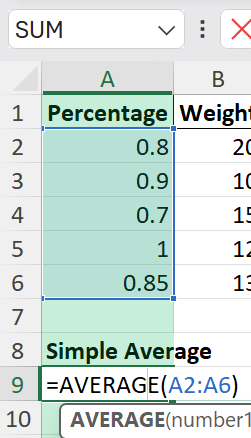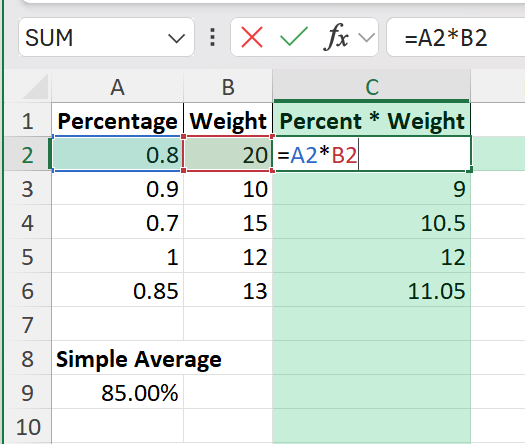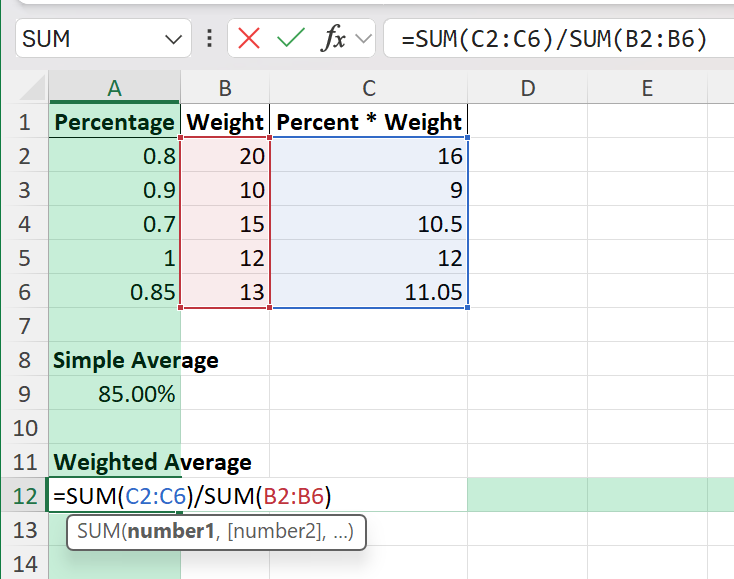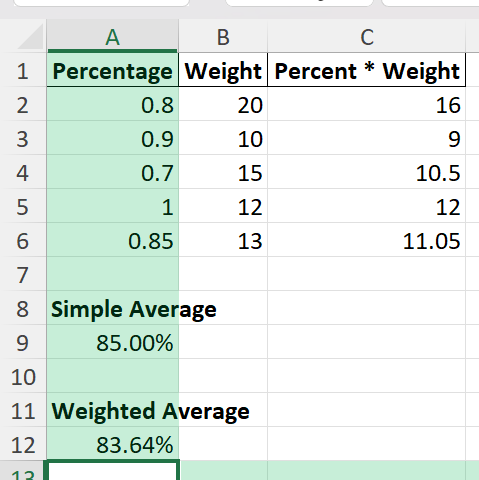Averaging percentages in Excel is a common task for reporting, analysis, and dashboards. Whether you’re calculating classroom averages, performance metrics, or survey results, knowing how to average percentages correctly is essential. Excel offers easy formulas and tools for simple, weighted, and advanced percentage averaging, ensuring that your results are clear, accurate, and easy to update.
Key Takeaways
- Use the
AVERAGEfunction for a simple mean of percentages in a range. - Use a weighted average if each percentage represents a different sample size or weight.
- Excel allows you to calculate averages for percentages formatted as numbers or % values.
- Power Query and VBA can help automate and customize average calculations for large or complex data.
- Be careful not to simply average percentages from already-aggregated data unless that fits your analysis.
Table of Contents
About Averaging Percentages in Excel
A simple average adds all percentages and divides by the count. For example, if five students scored 80%, 90%, 70%, 100%, and 85%, the average percentage is (80% + 90% + 70% + 100% + 85%) ÷ 5 = 85%. However, if each percentage represents a different sample size, you may need a weighted average, not a simple mean.
Simple average: Use when all data points have equal importance.
Weighted average: Use when each percentage has a different “weight,” like attendance from groups of different sizes.
How to Average Percentages in Excel
Step 1: Enter Your Percentage Data
Type your percentages in column A (as either decimal numbers like 0.80 or formatted as % like 80%).
Example: 80%, 90%, 70%, 100%, 85%
Step 2: Calculate the Simple Average
In the simple average cell, enter:
=AVERAGE(A2:A6)
This returns the mean of your percentages.
Format the result as Percentage (Home > Number > %).
Step 3: Calculate a Weighted Average
In column B, enter your weights (e.g., sample sizes, counts).
In cell C2, enter:
=A2*B2
Copy down for all rows.
In the weighted average cell, enter:
=SUM(C2:C6)/SUM(B2:B6)
This returns the weighted average percentage.
Format the result as Percentage.
Common Mistakes and Tips
Mistake: Averaging percentages from summarized data
Never average averages unless the sample sizes are the same.
Mistake: Forgetting to use weights
Always use a weighted average if your percentages represent different group sizes.
Tip: Use number formatting for clarity
Always format average results as percentages for readability.
Tip: Double-check ranges in your formulas
Make sure your AVERAGE or SUM formulas reference the correct cells.
Tip: Use named ranges for easier maintenance
Assign names to your data and weights for more readable formulas.
Bonus Tips and Advanced Scenarios
VBA Macro for Weighted Average
Function WeightedAverage(Percentages As Range, Weights As Range) As Double
Dim i As Integer
Dim num As Double, denom As Double
num = 0: denom = 0
For i = 1 To Percentages.Count
num = num + Percentages.Cells(i) * Weights.Cells(i)
denom = denom + Weights.Cells(i)
Next i
WeightedAverage = num / denom
End Function
Use as =WeightedAverage(A2:A6, B2:B6) in your sheet.
Use the SUMPRODUCT function for one-line weighted averages
=SUMPRODUCT(A2:A6, B2:B6) / SUM(B2:B6)
Show both simple and weighted averages side by side for clarity
Practical Use Cases
Student test score analysis (simple and weighted)
Employee performance and attendance tracking
Survey or poll result aggregation
Quality control pass/fail rates by batch size
Financial and operational KPI reporting
FAQ
Q: What is the difference between simple and weighted average?
A: A simple average treats every data point equally. A weighted average considers how much each value “counts,” usually based on size or importance.
Q: Should I always use a weighted average?
A: Only if your percentages represent different group sizes or weights.
Q: Can I average percentages across columns?
A: Yes, use =AVERAGE(B2:D2) for row-wise or adjust the range for your setup.
Q: Does Excel’s AVERAGE function work for percentages?
A: Yes, as long as your data is formatted as numbers or percentages, AVERAGE returns the mean percentage.
Q: Can I automate this for new data entries?
A: Yes, use Excel Tables, Power Query, or VBA for dynamic averaging.
John Michaloudis is a former accountant and finance analyst at General Electric, a Microsoft MVP since 2020, an Amazon #1 bestselling author of 4 Microsoft Excel books and teacher of Microsoft Excel & Office over at his flagship MyExcelOnline Academy Online Course.

